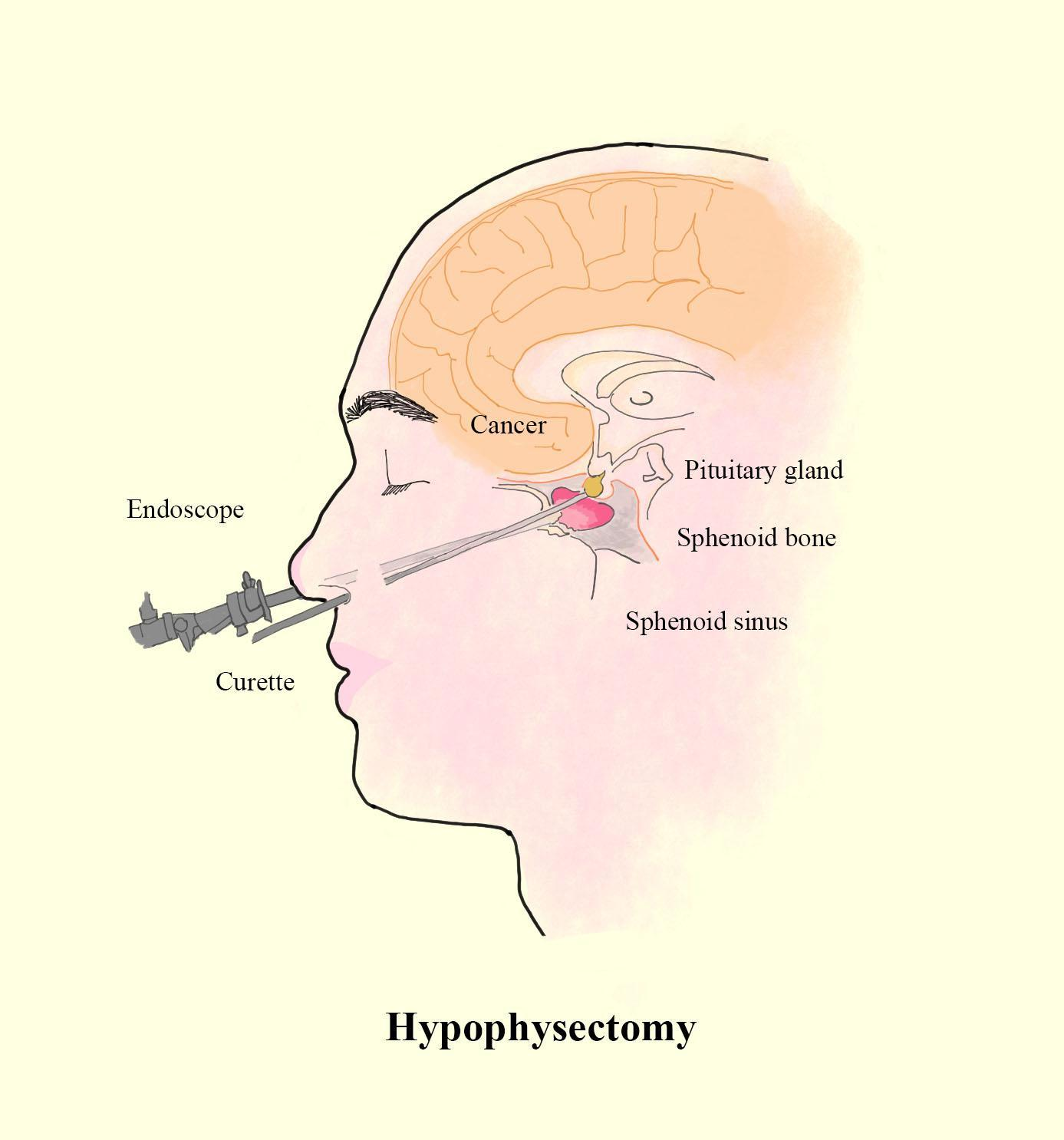
Hypophysectomy results in
(a) Heart attack
(b) Regression of reproductive functions
(c) Death
(d) Poor digestion
Answer
477.9k+ views
Hint: The surgical technique performed to remove the master gland is hypophysectomy. This gland secretes hormones such as follicle-stimulating hormone (FSH) and luteinizing hormones (LH). Eventually, the lack of these hormones disrupts sex hormones such as estrogen and testosterone.
Complete step by step answer:
Hypophysectomy is the removal of the pituitary gland (hypophysis) by surgery. Pituitary gland removal can result in the regression of reproductive functions because of the Luteinizing Hormone and Follicle Stimulating Hormone secreted by the anterior lobe of the pituitary.

LH induces ovarian follicle development in females. Ovarian follicles secrete the female sex hormone estrogen. This hormone is known as Interstitial Cell Stimulating Hormone (ICSH) in males because it affects interstitial cells or Leydig cells and activates the release of the male sex hormone testosterone.
The anterior section of the pituitary gland secretes the FSH. It promotes the production in females of ovarian follicles and in males of seminiferous tubules. In males, this hormone also facilitates spermatogenesis, i.e. the process of sperm formation from the germ cells.
So, the correct answer is, ‘Regression of reproductive functions’.
Additional information: Glucocorticoids are also drugs that are given as hormone replacement therapy following full hypophysectomy (pituitary gland removal). Hyperlipidemia and secondary Addison's can occur. In regulating the metabolism of cholesterol that has been impaired by pituitary deletion, the thyroid hormone is useful.
Note:
- Hypophysectomy is most widely performed for the treatment of tumors, especially tumors of craniopharyngioma. Often, regardless of pituitary adenoma or Simmond disease, it is used to treat Cushing's syndrome.
- In neurosciences (in studies with laboratory animals), it is often used to explain the functioning of the hypophysis.
- There are different ways to do hypophysectomy. Transsphenoidal hypophysectomy, open craniotomy, and stereotactic radiosurgery are used in these techniques.
Complete step by step answer:
Hypophysectomy is the removal of the pituitary gland (hypophysis) by surgery. Pituitary gland removal can result in the regression of reproductive functions because of the Luteinizing Hormone and Follicle Stimulating Hormone secreted by the anterior lobe of the pituitary.

LH induces ovarian follicle development in females. Ovarian follicles secrete the female sex hormone estrogen. This hormone is known as Interstitial Cell Stimulating Hormone (ICSH) in males because it affects interstitial cells or Leydig cells and activates the release of the male sex hormone testosterone.
The anterior section of the pituitary gland secretes the FSH. It promotes the production in females of ovarian follicles and in males of seminiferous tubules. In males, this hormone also facilitates spermatogenesis, i.e. the process of sperm formation from the germ cells.
So, the correct answer is, ‘Regression of reproductive functions’.
Additional information: Glucocorticoids are also drugs that are given as hormone replacement therapy following full hypophysectomy (pituitary gland removal). Hyperlipidemia and secondary Addison's can occur. In regulating the metabolism of cholesterol that has been impaired by pituitary deletion, the thyroid hormone is useful.
Note:
- Hypophysectomy is most widely performed for the treatment of tumors, especially tumors of craniopharyngioma. Often, regardless of pituitary adenoma or Simmond disease, it is used to treat Cushing's syndrome.
- In neurosciences (in studies with laboratory animals), it is often used to explain the functioning of the hypophysis.
- There are different ways to do hypophysectomy. Transsphenoidal hypophysectomy, open craniotomy, and stereotactic radiosurgery are used in these techniques.
Recently Updated Pages
Master Class 11 Economics: Engaging Questions & Answers for Success

Master Class 11 Business Studies: Engaging Questions & Answers for Success

Master Class 11 Accountancy: Engaging Questions & Answers for Success

Master Class 11 English: Engaging Questions & Answers for Success

Master Class 11 Computer Science: Engaging Questions & Answers for Success

Master Class 11 Maths: Engaging Questions & Answers for Success

Trending doubts
Why was the Vernacular Press Act passed by British class 11 social science CBSE

Name the nuclear plant located in Uttar Pradesh class 11 social science CBSE

What steps did the French revolutionaries take to create class 11 social science CBSE

One Metric ton is equal to kg A 10000 B 1000 C 100 class 11 physics CBSE

How did silk routes link the world Explain with three class 11 social science CBSE

Difference Between Prokaryotic Cells and Eukaryotic Cells




